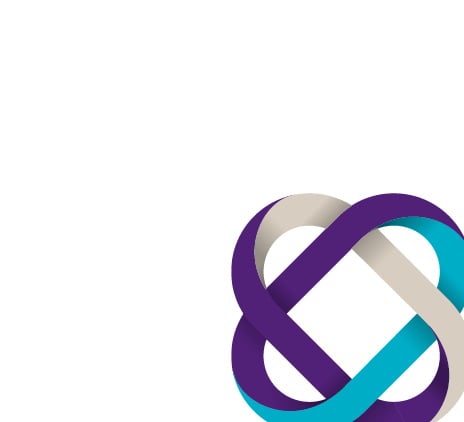-
Transactional advisory services
Find out more about the transactional advisory services of Grant Thornton Financial Advisory Services
-
Valuations
Find out more about the valuations services of Grant Thornton Financial Advisory Services
-
Mergers and acquisitions
Find out more about the merger and acquisition services of Grant Thornton Financial Advisory Services
-
Forensic and investigation services
Find out more about the forensic and investigation services of Grant Thornton Financial Advisory Services
-
Recovery & reorganisation
Find out more about the Recovery & reorganisation services of Grant Thornton Financial Advisory Services
-
Business risk services
Find out more about the business risk services of Grant Thornton Financial Advisory Services
-
Business consulting
Find out more about the business consulting services of Grant Thornton Financial Advisory Services
-
Capital market
Capital market
-
Corporate and business tax
Find out more about our corporate and business tax services.
-
Direct international tax
Find out more about our direct international tax services.
-
Global mobility services
Find out more about our global mobility services.
-
Indirect international tax
Find out more about our indirect international tax services.
-
Transfer pricing
Find out more about our transfer pricing services.
-
Litigation
Our lawyers and accountants can manage all defense measures provided not only by the Italian law, but also by EU regulations and conventions
-
Family business
Find out more about our Family business services.
-
Legal
The client can be assisted in every need and with the same care both on important operations or disputes and on simple matters

-
Back office outsourcing
Find out more about our Back office outsourcing services
-
Business process outsourcing
Find out more about our business process outsourcing services.
-
Compilation of financial statements
Find out more about our compilation of financial statements services.
-
Tax compliance
Find out more about our tax compliance services.
-
Electronic invoicing
Find out more about our electronic invoicing services
-
Electronic storage
Electronic storage is an archiving procedure that guarantees the legal validity of a digitally stored electronic document
-
Revaluation of corporate assets
Find out your civil and fiscal revaluation of tangible, intangible and financial assets
-
Human resources consulting
Find out more about our human resources consulting services.
-
Payroll
Find out more about our payroll services.
-
HR News
HR News the monthly information newsletter by Grant Thornton HR
-
Cybersecurity
GT Digital helps clients structure information security management internal functions, also through partially or totally outsourced functions
-
Agile and Programme Management
GT Digital provides support in the adoption and implementation of different portfolio management
-
Robotic Process Automation
Our “BOT Farm” can rely on digital workers able to help clients in routine activities, allowing employees to deal with more added-value activities
-
Data strategy and management
GT Digital can support clients in seizing the opportunities offered by Big Data, from the definition of strategies to the implementation of systems
-
Enterprise Resource Planning
We support clients in selecting the most appropriate ERP System according to their specific needs, helping them also understand licensing models
-
IT strategy
GT Digital supports clients in making strategic choices, identifying innovation opportunities, comparing themselves with competitors
-
IT service management
We can support with software selection and with the implementation of dedicated tools for the management of ICT processes
-
DORA and NIS 2
The entry into force of the DORA Regulation and NIS2 represents a major step towards the creation of a harmonised regulatory framework

The uptick in optimism in Italy (+20% compared to 33% recorded in the second half of 2020) is a positive sign; such a high percentage (more than a half) of optimistic businesses was actually last recorded in Italy in 2017.
43% of Italian businesses expect a revenue increase in the next 12 months (34% in the second half of 2020), with only 23% expecting a decrease. 37% of Italian businesses also intend to hire new people over the next year (+1% compared to 36% in Europe), while the global average reached 48%.
According to the latest figures from Grant Thornton’s International Business Report (IBR), a global analysis of over 2,500 mid-market business leaders, in the first six months of the year a marked increase in optimism was recorded by Italian businesses (+20% compared to six months ago) as concerns the economic outlook for the next 12 months, with up to 53% of businesses confident on an economic recovery.
The Italian data exceed the global average increase in optimism (+12%, at 69%), reaching not only the highest pre-Covid level, but the highest level since 2018. A marked increase in optimism was also recorded in Europe, up 26% compared to the second half of 2020, with 62% of EU companies optimistic about the next year.
An overall scenario indicating a recovery which - according to Grant Thornton - reflects the increased optimism on the future business expectations towards the key economic growth drivers, namely turnover, profitability and employment and which anticipates a year of recovery and further opening towards foreign countries, in particular to new and unexplored markets.
As far as the Italian situation is concerned, 43% of Italian businesses expect an increase in revenues in the next 12 months, a markedly higher result compared to the 34% recorded in the second half of 2020. On the contrary, only 23% of Italian businesses forecast a decrease. Globally, the percentage of businesses expecting an increase in revenues hit 57%, up by 12 percentage points compared to the second half of 2020.
Looking at the various industries, TMT (Technology, Media & Telecoms) and financial services are among the most optimistic (77% of the business leaders interviewed declared to be optimistic about the next 12 months), whereas Oil & Gas is among the least optimistic (“only” 47% of optimistic).
 Alessandro Dragonetti, Partner and Head of Tax of Grant Thornton commented: “The IBR results confirm that in the first months of the year Italian SMEs recorded one of the most marked increases in optimism globally (up 20 percentage points in six months) and that the health of the Italian economy is back in line with the EU average.
Alessandro Dragonetti, Partner and Head of Tax of Grant Thornton commented: “The IBR results confirm that in the first months of the year Italian SMEs recorded one of the most marked increases in optimism globally (up 20 percentage points in six months) and that the health of the Italian economy is back in line with the EU average.
This is no doubt a positive signal, due to both a strengthening of the business outlook - now that the worst of the Covid emergency is past - overcoming various obstacles and worries which hindered growth, and to a renewed businesses drive to increase investment and grow mainly abroad. The export volume, after recording a downturn at the beginning of the pandemic, has actually grown constantly and it is currently above the European average.
The expectations in terms of increase in investment in human resources are also a positive indicator for our businesses. This ‘new’ scenario of renewed optimism will be key in identifying new growth opportunities, both domestically and internationally.
To this end, a key factor will also be the ability to seize the opportunities offered by the government programmes introduced to support business during the pandemic crisis. As a final note, an aspect not to be underestimated will be the businesses’ ability to adopt on an ongoing basis the processes occasionally implemented during the emergency phase, thus increasingly investing in technology-intensive solutions”.

